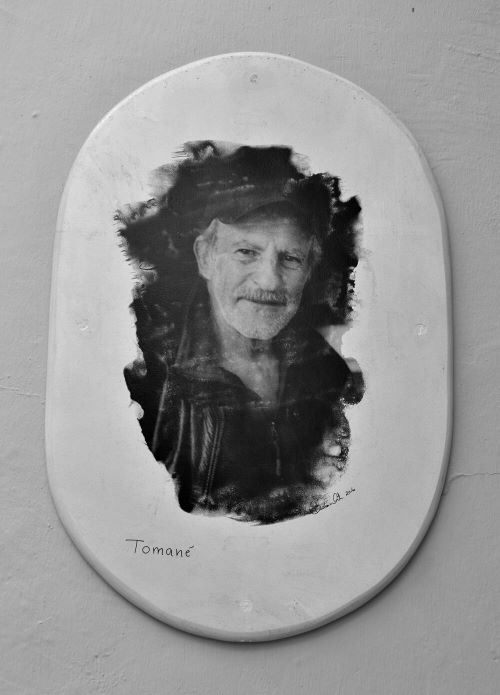I was walking with a group of travelers on an expedition to explore Lisbon when I found myself in Alfama, an old neighbourhood in the city of Lisbon, Portugal. As I was making my way uphill on a steep staircase, the guide of my walking tour stopped to explain to us the history of Alfama. Alfama is one of the oldest areas in the city with narrow streets that house some of the oldest residents of Lisbon, as well as generations of passionate Alfacinhas. As narrated by the tour guide, Alfacinha translates to ‘little lettuce’ and is used to refer to passionate residents of Lisbon. ‘Little lettuce’ is a widely grown vegetable in Lisbon and its people love to cultivate and eat this vegetable. This led to them receiving the name Alfacinhas – little lettuce. The residents of Alfama are specifically known for their vanity, expressing their immense pride that they belong to the scenic neighbourhood. Alfama is one of the oldest and most photogenic neighbourhoods in the district and this makes its residents proud of their beautiful home.
We stood in front of a beautiful view that overlooked the ocean, and the intersecting stairs and houses of the city. Alfama was vibrant, welcoming and peaceful, the walls around me were colourful, old, and decorated. As I was inspecting the glorious scenery around me I saw a black and white photograph of a man with a short text on the bottom left side of the picture. In contrast to the otherwise vibrant walls of Alfama, the photograph stood out due to its monochromatic hue. The text was written in Portuguese, but it gave a short summary of who the man on the wall was. His name was António Antunes.

It was a simple portrait of an ordinary man, yet it stood out to me because of its random placement on the quiet street of Calçadinha de Santo Estêvão. The portrait was evidently not set up as a tourist attraction, it was isolated from crowded stalls, and tourist groups. It was only later that I learnt that the portrait was a tribute to a humble Alfacinha that lived his life as a proud resident of Alfama. The tribute was one of many – to celebrate Alfama’s inhabitants through these photographs. Some of the portraits were printed on the limestone itself, further immortalising the lives of its residents.
“As told by the people – the exhibition has given the residents a sense of pride and identity.”
The portrait of António Antunes was one of the 40 installations that is the permanent outdoor exhibit of Alma de Alfama – the soul of Alfama. Its artist Camilla Watson now resides in Almada, Portugal and lived in Lisbon for 12 years. While living in Lisbon, Camilla became particularly drawn towards Alfama’s community due to their warm fellowship towards one another. Her famous outdoor exhibition in Alfama was inaugurated in 2017 consisting of portraits spread around the historic neighbourhood. The route begins in front of the Museum Fado and spreads in the nooks and corners of Alfama. António Antunes’ portrait was roughly placed towards the east of the neighbourhood. Camilla also inaugurated a similar outdoor exhibit in 2021, named ‘Alma do castelo’ in Castelo São Jorge in Lisbon. Both exhibitions aim to celebrate the invaluable role the inhabitants of the neighbourhood have played in maintaining its rigour and authenticity. The neighbourhood’s soul, its people and their stories are eternalised in the walls around the locality.
In her artist statement, Camilla Watson highlights her passion for keeping a communities’ history alive. Camilla’s tribute especially extends to the elderly who can often feel left behind in this rapidly evolving technological world. Away from the crowd of central Lisbon, her exhibition was truly a beautiful attempt at immortalising the past into the present; it was visual, creative, and accessible to all. Moreover, the portraits were a raw depiction of the neighbourhood’s lives. People from different families of the neighbourhood savour the celebration of its rich community, filled with incredible yet simple lives. As told by the people – the exhibition has given the residents a sense of pride and identity.
As a tourist walking past the portraits I came closer to the community of Alfama due to the beautiful description of its people through visuals and words. Her exhibition was truly something meaningful to the people of Alfama and Lisbon. Even though a resident of Graça, our tour guide was also deeply moved by Camilla’s tribute to the community. For me Camilla’s exhibition resonated with my belief in the importance of a legacy. As I grow old I aspire to leave behind memories that represent my life along with the people I spent it with. Camilla’s exhibition, Alma de Alfama inspired me to take more pictures, write more and most importantly cherish my magnificent life to the fullest. The walking tour did not cover the route of Camilla’s outdoor exhibit but I hope in the future I am able to witness the entire exhibition and learn more about the stories of the glorious Alfacinhas!
To know more about the exhibitions, and Camilla Watson you can visit her website https://www.camillawatson.com/.
Editor: Aidan O’Reilly
Cover: Pixaby





